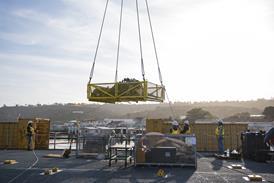Forget the millennium, chuck out your GPS units and satellite phones and find your map and compass - the sunspots are coming!
Researchers are forecasting the sun's solar cycle may peak during January to April next year.
The sun is expected to heave with solar flares and coronal ejections - solar explosions that can equal a million 100 megaton hydrogen bombs.
Navigation
The effects on navigation satellites could be severe, although no one really knows what will happen.
In an earlier solar cycle, small rocket thrusters on a satellite suddenly started firing, sending the spacecraft out of position. Control of another satellite was lost when its gyroscopes were disrupted.
With airlines being so reliant on GPS for navigation and even landing, it might be a good time to think of back-up procedures. Satcom systems could also be affected.
And operators relying on HF communications to keep in contact with their aircraft are in for a bumpy ride too. The flares can black out HF radio links, sometimes for hours.
The blackouts don't affect VHF or UHF communications, hence the industry's desire to move away from HF. But HF is still used, especially on transatlantic links, so air-to-ground communication could remain difficult at times.
Energy
Electromagnetic energy from the sun can also send huge waves of electrical energy surging along power lines, shorting circuits and burning out equipment. A 1989 solar storm caused blackout in Quebec and a transformer station in New Jersey melted.
Just imagine what this could do to a delicate satellite sitting in space. Scare mongering? Only time will tell, although HF wipeouts are virtually inevitable.
Source: Flight Daily News























